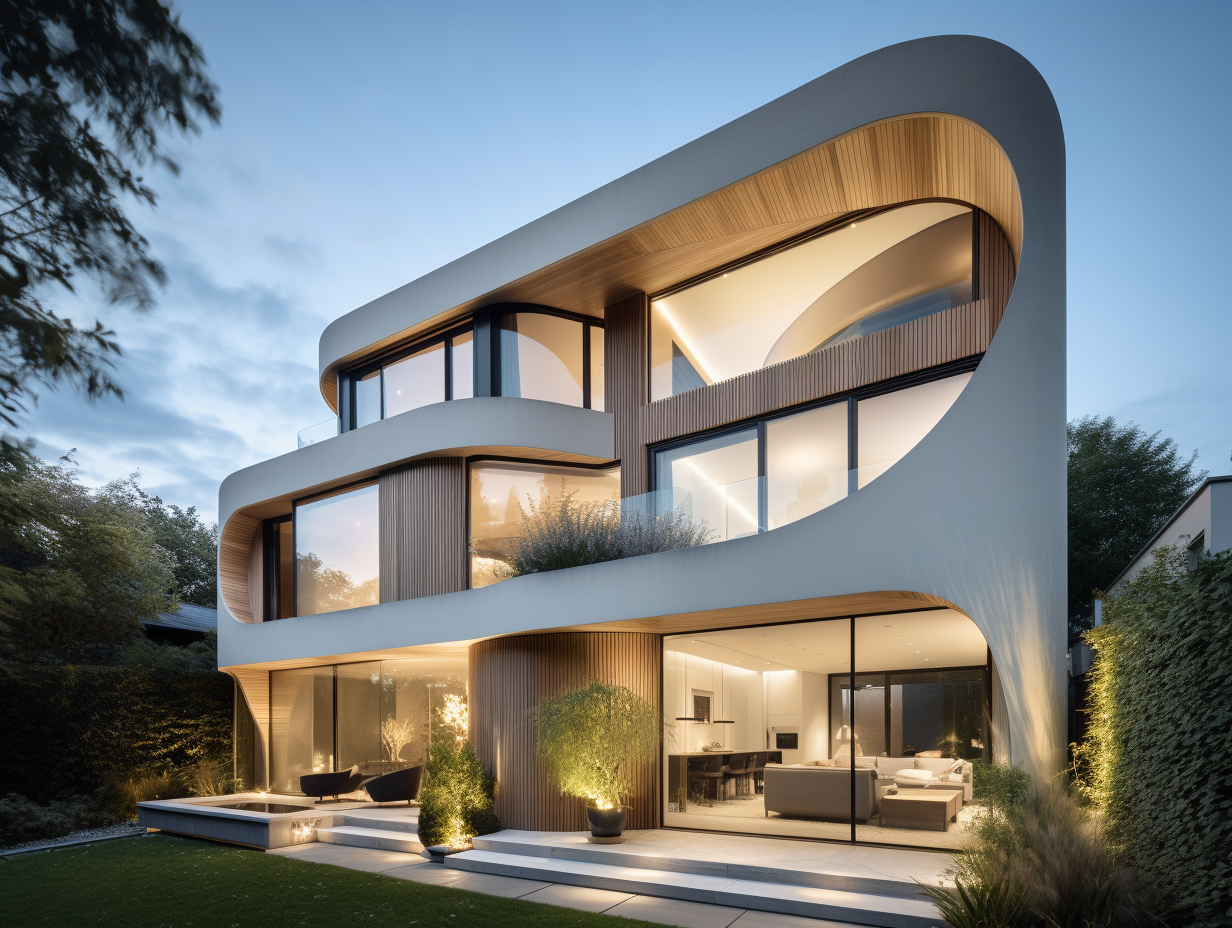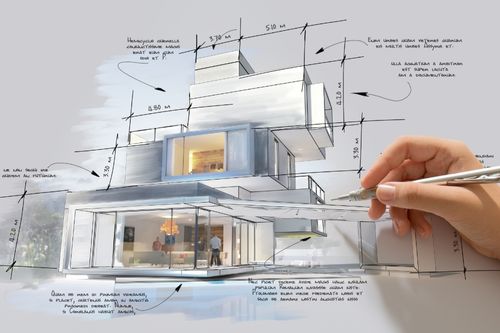Transforming Areas: The Vision of CDA Architects for Modern Living
Transforming Areas: The Vision of CDA Architects for Modern Living
Blog Article
The Impact of Technological Advancements on the Design Practices of Contemporary Architects
The fast development of technological devices has dramatically reshaped the design landscape for modern architects, fostering unprecedented degrees of development and sustainability. Exploring these characteristics discloses a nuanced interaction between innovation and standard design techniques, triggering a better exam of what the future holds for architectural methods.
Advancement of Architectural Equipment
Just how have architectural devices transformed the design and construction processes over the centuries? The development of building devices has actually substantially influenced the efficiency, accuracy, and imagination of style and building. In old times, engineers rely upon simple instruments such as plumb bobs, determining rods, and basic geometry to develop structures. These tools laid the foundation for early building method, enabling the construction of legendary frameworks, albeit with constraints in precision and intricacy.
With the development of the Renaissance, the introduction of the compass and the protractor marked an essential change. These devices enabled designers to attain better precision in their layouts, facilitating the introduction of even more intricate and proportionate structures (cda architects). The Industrial Change better transformed building method with the introduction of mechanical devices and materials, enabling larger and a lot more ambitious projects
In the 20th century, the advancement of computer-aided style (CAD) software changed the landscape as soon as again, providing architects with unmatched capacities in modeling and visualization. Today, advanced tools such as Structure Info Modeling (BIM) and parametric layout software application proceed to push the limits of building technology, enabling a more incorporated strategy to design and building and construction procedures.

Improved Collaboration in Design
As technology continues to advance, enhanced collaboration in style has actually come to be a cornerstone of modern-day architectural practice. The combination of electronic tools such as Structure Info Modeling (BIM), cloud-based platforms, and advanced visualization software program has actually changed the means engineers, designers, and stakeholders communicate throughout the style procedure. These devices facilitate real-time interaction, enabling groups to share concepts, modifications, and feedback quickly, no matter geographical area.
Moreover, online reality (VR) and boosted truth (AR) have additional enriched collaborative efforts by allowing immersive experiences that allow clients and employee to visualize tasks in a much more engaging manner. This degree of communication not only boosts understanding however additionally cultivates a feeling of ownership amongst stakeholders, bring about even more informed decision-making.
Additionally, interdisciplinary collaboration has actually been structured with these technical improvements, allowing architects to work more very closely with various other experts, such as metropolitan planners and ecological experts. The result is an extra natural strategy to create that considers various perspectives and knowledge. Ultimately, improved collaboration in style is not merely a trend; it is important for producing ingenious, practical, and cosmetically pleasing style in an increasingly complex world.
Sustainability Via Innovation
Sustainability in style has he said actually progressively come to be linked with technical technology, driving the industry toward ecologically liable practices - cda architects. Contemporary engineers are leveraging advanced innovations to decrease ecological influence while boosting the performance of buildings. One noticeable instance is the use of Building Info Modeling (BIM), which enables accurate planning and resource allotment, minimizing waste during building and construction and advertising energy performance next throughout a structure's lifecycle
Moreover, wise materials and energy-efficient systems are being incorporated into layouts to optimize resource use. Technologies such as solar batteries and eco-friendly roof covering systems harness renewable resource sources, contributing to lowered carbon impacts. Additionally, the application of fabricated intelligence in layout processes enables engineers to imitate and assess energy intake, leading decisions towards even more lasting end results.
The integration of sustainable technologies not just aligns with global environmental objectives yet likewise meets a boosting demand from customers for environment-friendly options. As designers accept these developments, the emphasis shifts in the direction of developing spaces that are not just cosmetically pleasing but also functionally sustainable, therefore redefining the standards of contemporary design. In this way, technology serves as a catalyst for sustainability, enabling engineers to make buildings that regard and improve the natural surroundings.
Obstacles in Application
While technical advancements in architecture hold wonderful pledge for improving sustainability, their implementation often runs into significant challenges. One main obstacle is the steep understanding curve associated with brand-new modern technologies. Designers and building and construction specialists may require substantial training to successfully use sophisticated software and devices, which can postpone job timelines and raise prices.
Furthermore, the combination of arising technologies, such as why not try here Building Info Modeling (BIM) and lasting materials, often requires partnership throughout multidisciplinary groups. This collaboration can be prevented by differences in proficiency, operations, and communication designs, resulting in prospective conflicts and inadequacies.
Financial restraints further make complex the fostering of innovative technologies. Numerous architectural firms, especially smaller sized ones, may do not have the resources to invest in advanced devices, limiting their capability to take on larger companies that can manage such investments.
Moreover, regulatory structures and building regulations might not equal technological developments, developing uncertainty and prospective compliance concerns. This difficulty can discourage designers from completely accepting new modern technologies, as the threat of non-compliance may outweigh the benefits. Resolving these execution difficulties is vital for the effective combination of technological improvements in contemporary building practices.
Future Patterns in Style
The challenges related to the implementation of new modern technologies in style have actually motivated a reevaluation of future fads within the sector. As engineers navigate issues such as sustainability, urbanization, and social equity, they are increasingly embracing cutting-edge technologies to enhance design effectiveness and ecological efficiency.
One prominent fad is the integration of expert system (AI) in the design procedure. AI devices can assess huge datasets to inform style decisions, improving both creativity and functionality. In A Similar Way, Building Details Modeling (BIM) remains to evolve, allowing real-time partnership amongst stakeholders and facilitating structured project monitoring.
Lasting design practices are additionally getting energy, with architects concentrating on flexible reuse and regenerative layout concepts that minimize resource consumption and waste. The unification of clever materials and renewable resource resources will certainly further enhance the resilience of structures when faced with environment change.
Furthermore, the surge of parametric style allows for even more personalized and context-sensitive architectural services. By utilizing these improvements, architects are poised to create built environments that not only attend to the prompt requirements of society yet likewise anticipate future difficulties, therefore redefining the role of design in an ever-changing world.
Conclusion

Report this page